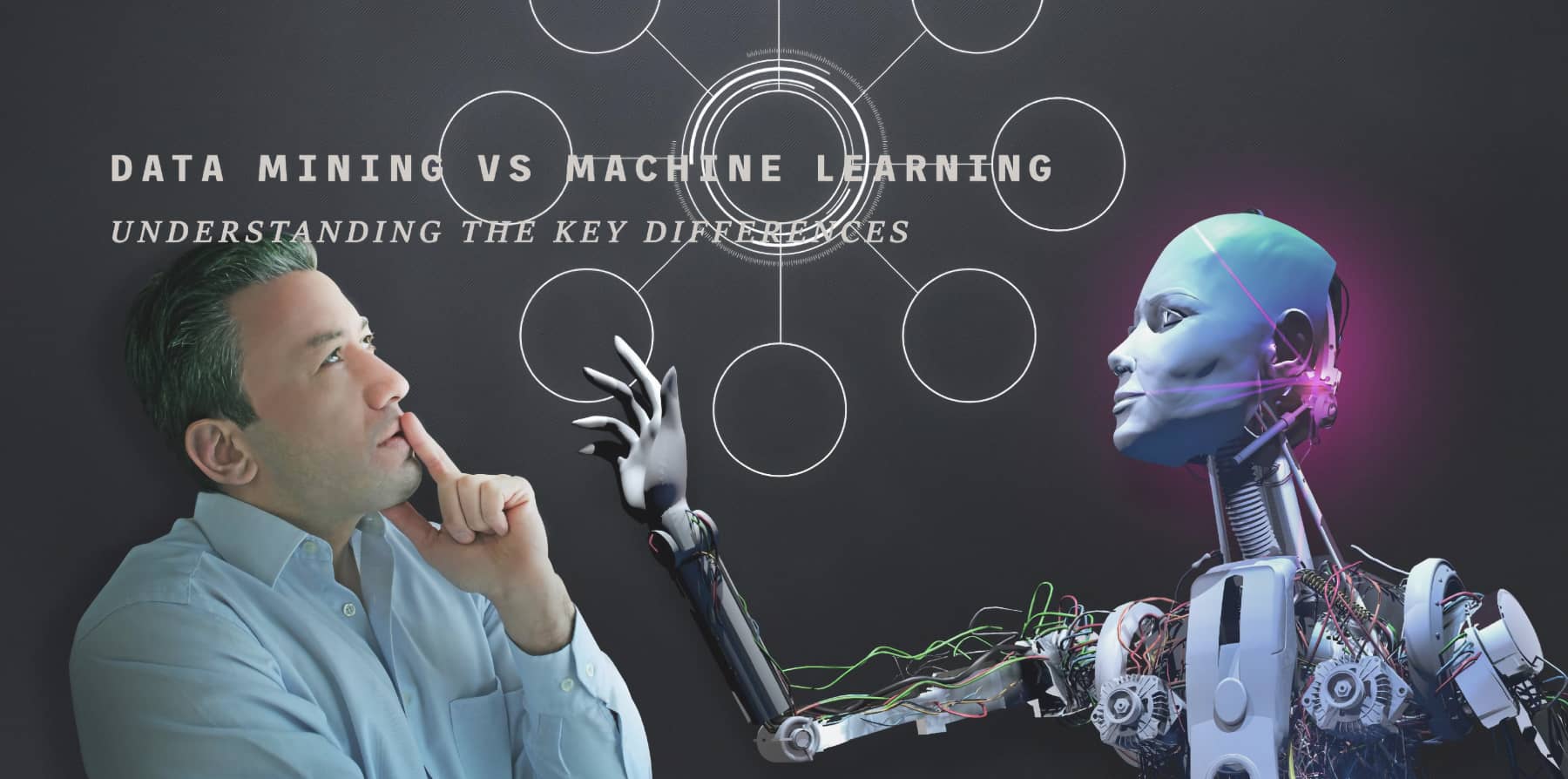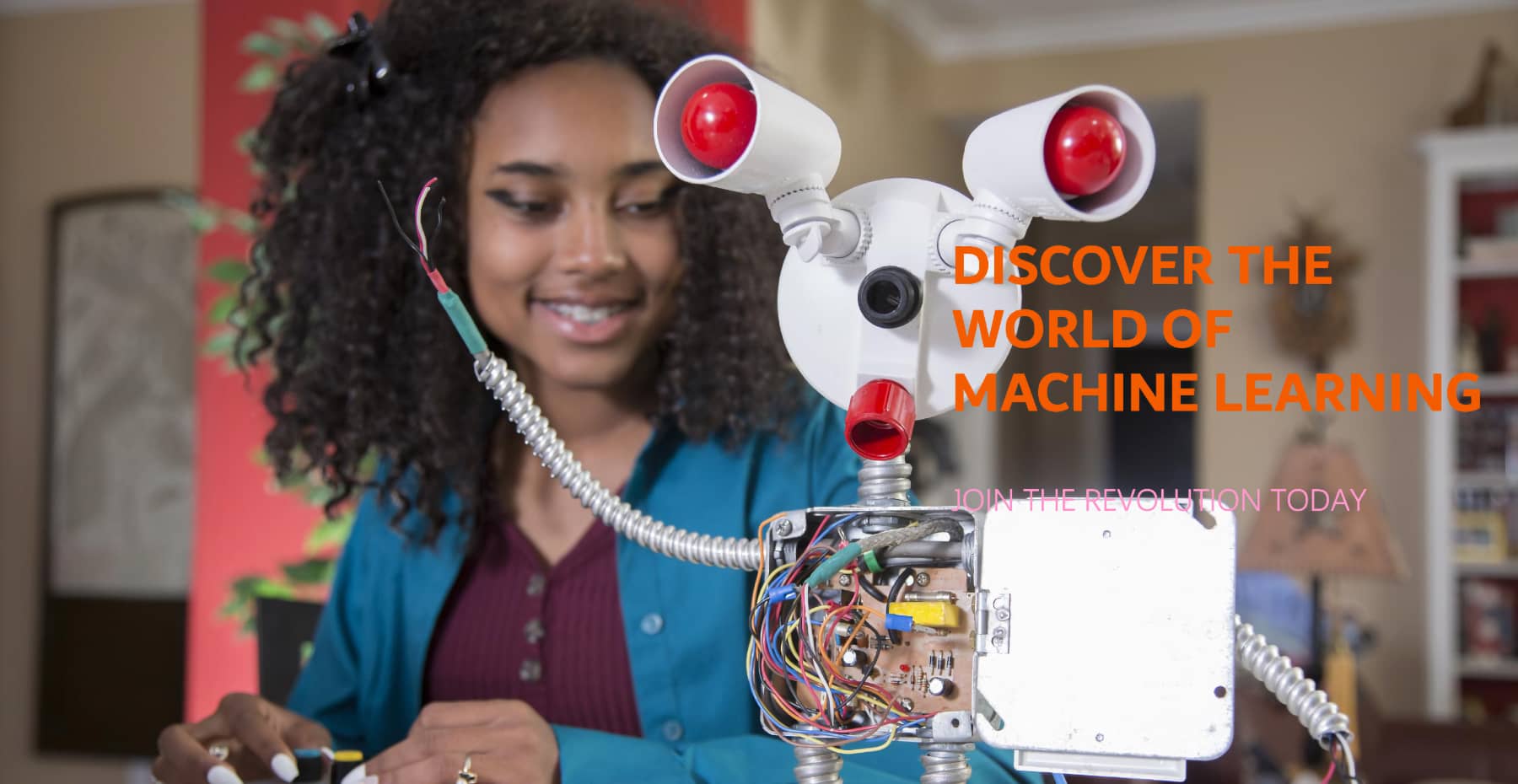Data is growing exponentially in the modern digital era. Organizations across industries are realizing the game-changing potential of extracting valuable insights from this ever-expanding data universe. However, with the proliferation of advanced analytics techniques, confusion arises regarding the precise meanings and applications of terms like data mining and machine learning. This article aims to clear the air and establish a firm, nuanced understanding of the two fields.
Defining the Building Blocks
What is Data Mining?
Data mining refers to the computational process of discovering hidden patterns, trends, correlations, and anomalies by sifting through vast datasets using predefined techniques. It can be thought of as a microscope that data scientists employ to closely examine data granules and uncover previously unknown, actionable insights.
Some commonly used data mining techniques include:
Classification: Categorizing data points into specific buckets or classes based on certain attributes
Clustering: Grouping data points that exhibit similarity across various dimensions
Association rule mining: Identifying if-then relationship statements that quantify cause-effect connections between data attributes
Across sectors, organizations leverage data mining for diverse use cases, including:
Detecting financial fraud in the banking domain
Segmenting customers based on common traits for targeted marketing in retail
Forecasting emerging trends through analysis of social media chatter
What is Machine Learning?
Machine learning is a contemporary, versatile branch of artificial intelligence focused on constructing algorithms that can learn, evolve, and make predictions from data without needing explicit programming. Based on new inputs and outcomes, the algorithms continuously update themselves through a feedback loop to enhance predictive prowess over time.
There are three prime categories of machine learning:
Supervised learning: Making predictions from training data containing both inputs and correct outputs
Unsupervised learning: Finding hidden patterns in datasets without labeled responses
Reinforcement learning: Optimizing actions in an environment solely based on feedback rewards and penalties
Machine learning powers many marvels of the digital business environment today, including:
Image and speech recognition
Product recommendations
Supply chain forecasting
Predictive analytics like customer churn models
Self-driving car automation
Distinct Characteristics
While data mining and machine learning may feel interchangeable due to their shared data foundation, they differ across some key dimensions:
| Data Mining | Machine Learning |
Focus | Finding meaningful patterns in existing datasets | Building models that continuously evolve and make predictions |
Key Process | Data extraction using predefined techniques rules | Algorithm improvement through dynamic feedback |
Level of Automation | Heavily human-driven | Highly automated, less human intervention needed |
Adaptability | Static analysis and insights | Models and predictions keep getting smarter |
Essentially, data mining focuses on using historical data to understand reality as it existed in the past. Machine learning uses available data to make increasingly accurate guesses about unknown future events.

Delving Deeper: Key Differences
While data mining and machine learning share several commonalities that intersect, they diverge on some fundamental aspects:
Their Age
Data mining is the older, more mature analytics methodology dating back to the 1960s. Machine learning, on the other hand, emerged as a discipline later in the 1990s, spearheaded by the expanding capacities of computational power.
Their Purpose
As discussed earlier, the core purpose of data mining techniques is to uncover hidden relationships, patterns, and insights within existing datasets. It serves as an archaeologist sifting through historical data treasures to glean actionable gems.
Machine learning, however, focuses on leveraging available data to build predictive models that improve continuously in accuracy based on dynamic feedback without human intervention. It's essentially about creating algorithms that mimic and augment human-like learning abilities for specified tasks.
What They Use
Data mining relies extensively on the volume and variety of available data within repositories like data warehouses and transactional databases to derive value. The richer and messier the data, the greater the potential insights from mining activities.
Machine learning models, however, are trained using carefully prepared and labeled datasets that teach the algorithms about expected variations. The models assimilate these learnings to fine-tune responses for unseen data. Rather than volume, machine learning prioritizes quality and relevance of data consumption.
The Human Factor
Data mining requires the active participation of human data scientists and analysts throughout. Though it leverages computational heft for accelerated processing, turning raw data into meaningful insights necessitates the contextualization, interpretation, and storytelling abilities that only humans possess.
Meanwhile, most machine learning processes run with minimal human interference once the initial training and testing steps complete. The algorithmic models automatically enhance themselves moving forward based on parameters learned from data patterns experienced so far. This ability for continuous self-improvement without external hand-holding is the essence of machine learning.
While they may share some procedures and infrastructure, data mining and machine learning solve for divergent analytical challenges. Recognizing these core differences provides a more nuanced perspective of their respective strengths.
Synergistic Potential
While having distinct priorities, data mining and machine learning can feed into each other, paving the path for amplified, holistic data science success. For instance, the hidden insights uncovered through thorough data mining exploration can inform the selection, training, and evaluation of high-potential machine learning models.
As the data universe continues expanding exponentially, integrating techniques from both toolkits will become pivotal for organizations aiming to optimize decision-making through intelligence hidden within data. Rather than treating them as isolated domains, viewing data mining and machine learning as complementary allies catalyzes more robust, precise, and impactful data science.
Data Mining vs. Machine Learning
Let's crystallize the differentiation between data mining and machine learning by comparing them across various attributes:
Dimension | Data Mining | Machine Learning |
Objective | Uncover valuable insights from existing data | Create predictive models that continuously learn |
Key Process | Leveraging data analytics techniques | Improvement of algorithms based on feedback |
Level of Automation | Heavily human-driven | Highly automated |
Adaptability | Static analysis | Models become smarter continuously |
Data Usage | Analyzes available datasets | Trains on properly prepared data |
Primary Value | Finding meaningful patterns | Making accurate predictions |
Use Cases | Market research, fraud detection | Image recognition, product recommendations |
As evident, while leveraging a shared data foundation, data mining and machine learning diverge in their core priorities.
Data mining revolves around discovering previously unknown insights from data at rest through pattern detection techniques, human intuition, and contextual interpretation. Machine learning focuses on developing algorithms that mimic human learning abilities to make increasingly smarter decisions on future unknown data.
Integration between both approaches unlocks immense value. Machine learning models can assimilate the output of data mining explorations as input training data. Similarly, data mining can uncover blind spots in model performance to drive refinement.
Positioned in complement rather than competition, this synergistic interplay between data mining and machine learning heightens the success probabilities of data science programs. Clarity regarding their precise, differing roles is thus key.
Finding the Common Ground
While having distinct objectives and approaches, data mining and machine learning share some common traits:
Reliance on Data Analysis
Both data mining and machine learning rely heavily on ingesting, manipulating, visualizing, and analyzing data to drive insights. They operate on the fuel of data - without rich, high quality datasets, their engines would stall.
From sourcing the appropriate data to transforming them analysis-ready, foundational data analysis is pivotal for both regimes before activating more specialized techniques.
Goal of Extracting Value from Data
At their core, data mining and machine learning share the ultimate north star of unlocking value hidden within data, even if their pathways differ.
Data mining unearths valuable insights rooted in past data. Machine learning creates even more value by applying those learnings to make smarter future decisions using algorithms.
Leveraging Similar Procedures
Certain underlying techniques live in both toolkits. For instance, common machine learning approaches like classification, clustering, and anomaly detection are also staple data mining techniques for exploratory analysis.
Additionally, algorithms leveraged to build predictive models consume the outputs of data mining processes as input feature sets.
Through these shared traits, data mining and machine learning possess an interlocked, symbiotic relationship. Recognizing their strategic intersection points, rather than just contrasting differences, allows for harvesting their complementary strengths.
So What Does This All Mean?
Given the multitude of intersections and distinctions across data mining and machine learning, what are the key implications for data scientists and business leaders?
Appreciate the Nuances
Rather than using the terms loosely or interchangeably, recognize data mining and machine learning as distinct analytical disciplines - each with their own historical context, objectives, technical arsenal, and use cases.
Seek Strategic Integration
Blend techniques from both camps across the analytics lifecycle - from initial data preparation and exploratory analysis to building operational models. Such cross-pollination amplifies success and ROI.
Understand Complementary Fit
Position data mining and machine learning as allies rather than competitors. Data mining provides the context and machine learning activates predictions. Their synergistic interplay drives superior data science maturity.
Continuously Evolve Expertise
Given machine learning's immense potential, build robust internal capabilities through training and recruitment. Simultaneously, double down on leveraging external expert partners to accelerate machine learning adoption across business functions.
Prioritize Hybrid Technology Investments
When evaluating analytics vendor solutions, prioritize platforms that facilitate seamless integration of data mining and machine learning techniques rather than siloed point capabilities.
Through this multifaceted understanding, organizations can harvest the symbiotic potential of data mining and machine learning to enable intelligent, nimble business processes powered by data.
The competitive advantage will lie with teams strategically leveraging these complementary techniques rather than approaching them as disjoint domains. What other implications arise from the increasing convergence of data mining and machine learning? Please share your perspectives below.

Want to Get in on Machine Learning?
Given machine learning's immense disruptive potential and skyrocketing adoption, how can individuals chart out a pathway to tap into associated opportunities? Here are some recommendations:
Understand Core Concepts
Enroll in educational programs covering machine learning essentials - key terminology, mathematical concepts, programming languages, model evaluation metrics, ethical considerations, and real-world case studies. Such broad-based learning builds strong foundations before specializing.
Develop In-demand Skills
Beyond theory, actively build hands-on expertise in domains like:
Applying advanced ML algorithms using Python/R
Training, optimizing, deploying ML models on cloud platforms
Productionizing and monitoring model performance through CI/CD pipelines
Architecting and implementing end-to-end ML systems
Such in-demand proficiencies accelerate employability.
Solve Real Problems
Rather than getting lost in academic niches, maintain focus on leveraging machine learning to solve compelling business challenges and create end-user value. Develop intuition for high-impact ML applications in your domain.
Commit to Continuous Upskilling
Give the pace of evolution in ML techniques and tools, resting on your laurels leads to competency obsolescence. Through access to the latest expert-led education programs and hands-on cloud lab environments, continually expand your skill stacks throughout your career.
With this structured approach towards skill-building and hands-on problem orientation, professionals across domains can harness machine learning to amplify personal success while creating organizational impact.
Harmonizing Data Mining and Machine Learning
At their core, data mining and machine learning share the common objective of extracting insights from data - but take varied pathways based on their focus areas.
Data mining revolves around discovering valuable findings from existing data through predefined techniques. It codifies understanding of the past.
Machine learning concentrates on developing algorithms that continuously enhance predictive prowess for unknown future events based on experienced learning, without human intervention.
Rather than isolated silos, strategic integration between data mining and machine learning unlocks immense potential. Data mining provides the contextual inputs for machine learning models to assimilate. Machine learning activations uncover new horizons for data mining exploration.
This interplay between past and future, explanation and prediction, unsupervised discovery and supervised accuracy creates a powerful flywheel effect. Organizations seeking to curry favor from the data explosion must embrace this symbiotic integration.
Hopefully this guide has enabled a nuanced perspective regarding the precise connotations and practical implications of data mining and machine learning. Which aspect resonated most or merits deeper discussion? Please share your valuable perspectives below!


